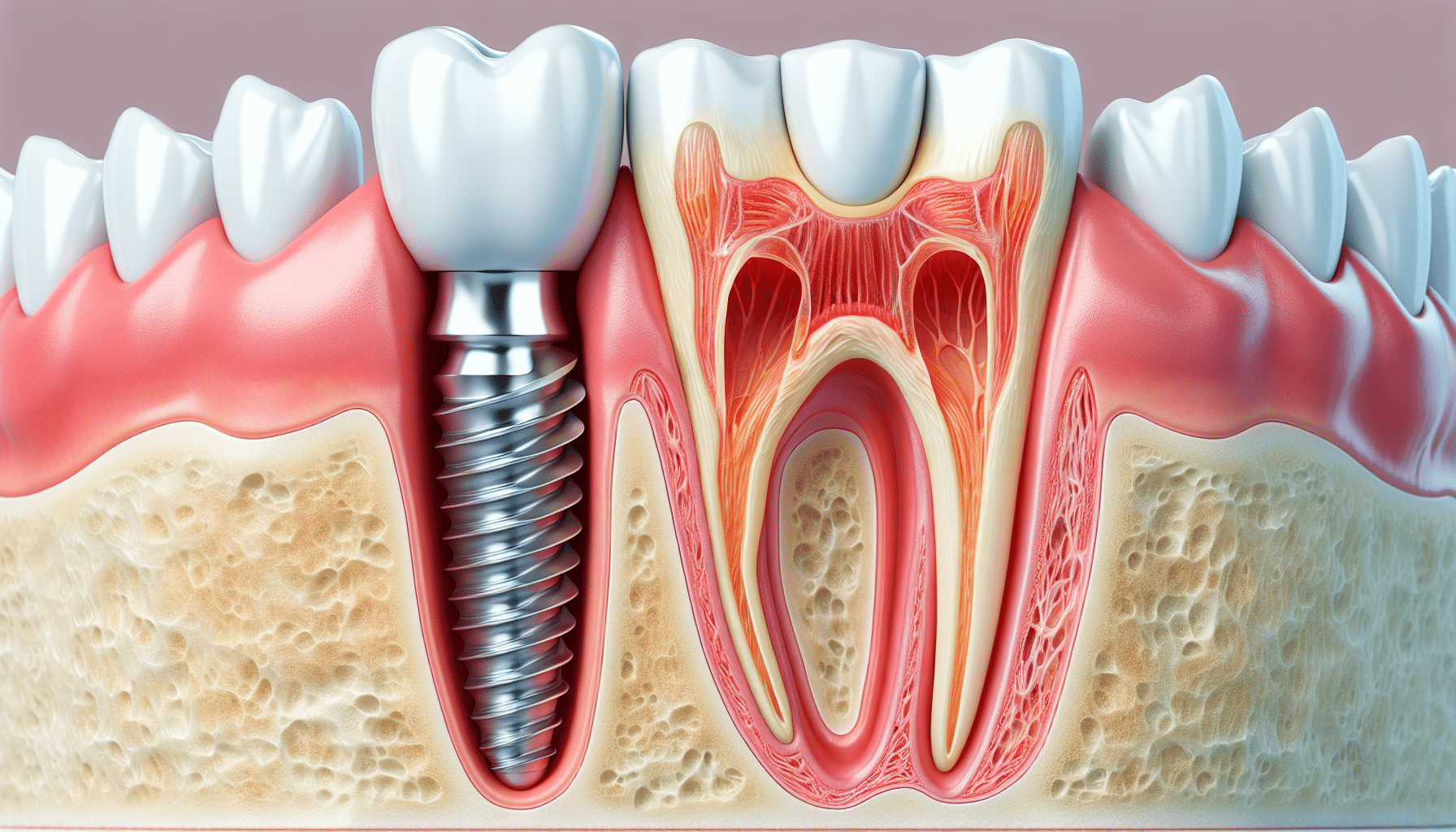The Best Guide To Dental Sense
The Best Guide To Dental Sense
Blog Article
The 8-Second Trick For Dental Sense
Table of ContentsUnknown Facts About Dental SenseWhat Does Dental Sense Mean?Not known Details About Dental Sense Facts About Dental Sense Revealed
are medical devices operatively implanted right into the jaw to bring back a person's capacity to chew or their appearance. They offer support for synthetic (fake) teeth, such as crowns, bridges, or dentures. When a tooth is shed as a result of injury or illness, a person can experience issues such as fast bone loss, malfunctioning speech, or adjustments to chewing patterns that cause discomfort.Oral implant systems include a dental implant body and dental implant joint and might also consist of an abutment addiction screw. Wisdom tooth cavity. The oral implant body is operatively inserted in the jawbone in area of the tooth's origin. The dental implant abutment is generally connected to the dental implant body by the abutment fixation screw and extends through gum tissues into the mouth to support the connected man-made teeth
(https://ameblo.jp/dentalsense1/entry-12882048969.html)Framework of The Oral Implant System selecting dental implants, speak with your dental service provider about the possible advantages and threats, and whether you are a prospect for the procedure. Points to think about: Your general health and wellness is an essential factor in establishing whether you are an excellent prospect for oral implants, the length of time it will require to heal, and for how long the dental implant may remain in area.
Smoking cigarettes may influence the recovery process and lower the long-lasting success of the implant. The recovery process for the implant body may take numerous months or longer, during which time you typically have a momentary abutment instead of the tooth. the oral implant procedure: Carefully adhere to the dental health guidelines offered to you by your dental supplier.
The Best Guide To Dental Sense
Implant failing can result in the need for an additional operation to take care of or replace the implant system. Restores the ability to eat Restores cosmetic appearance Assists keep the jawbone from diminishing as a result of bone loss Preserves the health and wellness of the bordering bone and gums Assists maintain nearby (neighboring) teeth stable Boosts lifestyle Damages to surrounding all-natural teeth throughout implant placement Injury to the surrounding cells throughout surgical treatment, such as sinus perforation Injury during surgical treatment (for instance, crack of bordering jawbone) Poor feature, such as seeming like the teeth do not attack with each other usually An experience that the tooth hangs or twisting in place resulting from a joint screw loosening Implant body failing (looseness of the implant body) because of systemic infection, which might be most likely in patients with uncontrolled diabetics issues because of regional infection in bone and periodontals supporting the implant body because of delayed healing, which may be more probable in patients that smoke Trouble cleansing the periodontals around the implant, causing bad dental hygiene Unattended gum condition Post-surgical tingling because of nerve impingement or damage Always notify healthcare service providers and imaging professionals that you have dental implants before any type of magnetic resonance imaging (MRI) or x-ray procedures.
FDA is not knowledgeable about any kind of damaging occasions reported for MRI or x-ray procedures with oral implants. Oral implants systems are normally made from materials that comply with global consensus YOURURL.com criteria of the International Organization for Standardization (ISO) or ASTM International. These criteria have details of what makes a secure product.

An oral implant is a framework that replaces a missing out on tooth. With screw-like gadgets, the surgeon inserts an implant into the jawbone, and it functions as a support for an artificial tooth, called a crown. A tool called an abutment attaches the synthetic tooth to the oral implant. The crown is personalized to fit the individual's mouth and match the shade of their teeth.
Dental Sense Fundamentals Explained
Some individuals are not qualified for oral implant surgical treatment. It is for dental specialists to operate on individuals with: intense illnessuncontrollable metabolic diseasebone or soft cells condition or infectionIf these problems are solved, an individual can have the surgical treatment. In, dental doctors avoid operating individuals with: If individuals with any one of the above go through dental implant surgery, there is a greater risk of the dental implant stopping working.

Dental implant surgical treatment is a tailored process. It's not the very same for everybody. The following gives a basic review of what you can anticipate your dentist, oral cosmetic surgeon, periodontist or prosthodontist to do: Put the dental implant surgically. Provide you time to recover. Connect the article and final crown, bridge or denture.
Next off, your doctor will meticulously position the oral implant right into your jaw. Your surgeon will certainly reposition your gums and shut the cut with stitches. If your dental implant is near the front of your mouth, your dental practitioner will certainly make a temporary tooth for you to use up until you heal. By doing this, you will not have a gap in your smile while you recuperate.
Unknown Facts About Dental Sense
Your supplier can tell you what to anticipate in your situation. During the recovery phase, your jawbone needs to fuse to the dental implant. This process, called osseointegration, is critical for stability and long-term success. This process can take anywhere from 3 to 9 months. Sometimes, it might take longer.
As soon as your dental implant heals, your dental expert can attach the abutment (tiny connector blog post) and your final repair (crown, bridge or denture). This generally takes about one hour to complete and might require a 2nd small surgical procedure. You shouldn't really feel any pain during your dental implant procedure because your provider will use drug to numb your gum tissues.
Report this page